Dogs have played an important role in the act of herding larger domesticated animals for over 6,000 years, and they’ve managed to find their way with humans all over the world. So it only makes sense that different breeds would come into favor and adapt to different communities based on the climate, geography, or livestock.
And it’s understandable that the different types of breeding dogs would also develop their own techniques to accommodate for their personal and situational circumstances.
While many of the dogs that are traditionally referred to as herding dogs come from the United Kingdom, that has more to do with the fact that the idea of purebred dogs began there. By seeing how these different breeds operate and how different they are from each other, we can better understand the world that shaped them.
Here are the eight most interesting different types of cattle dogs:
#8: Bearded Collie
Place of Origin: Scottish Highlands
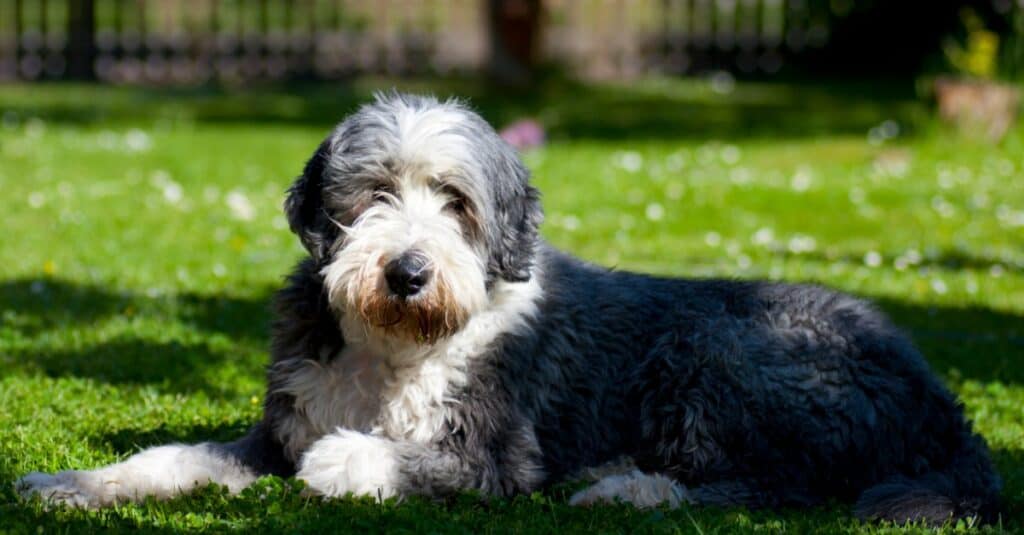
©iStock.com/Pontuse
The bearded collie doesn’t look much like the more popular rough collie, but they’re still tremendous cattle dogs that have developed their heavy coats to adapt to the unpredictable but often miserable weather of the Scottish highlands. The bearded collie compares in appearance often compared to a sentient mop, and they have active and irreverent personalities that they’ll maintain throughout their 11 to 15-year lifespan.
You can count on these dogs to get along with both kids and other pets, though their active imaginations make them prone to getting into trouble if left alone. And since they’re built for practically any condition, you have little excuse to not bring them out on a rainy day. But that also means that they’re some of the best dogs for active people and for those looking to get involved in dog competitions.
#7: Shetland Sheepdog
Place of Origin: Shetland Islands

©iStock.com/yanjf
The Sheltie’s place of origin is a small island off the coast of Ireland, and it’s that isolation that’s allowed them to grow in the unique way that they did and to only appear as a major international breed in the past few decades. But this breed didn’t just appear from nowhere, and the resemblance to the standard rough collie is readily apparent.
The smaller Shetland sheepdog is relatively short, with its maximum average height of 16 inches, but this smaller breed does manage to effectively employ its smaller size to maximum benefit in much the same way as the corgi. They also helped protect the gardens of their families from wandering pests like neighboring sheep or crows.
Since gaining more prominence throughout the world, shelties have come to be recognized as some of the most versatile working dogs around. They’re commonly seen running the circuit for agility sports and other competitions, but shelties are also favored as medical alert dogs and therapy animals as well. They like to have tasks to accomplish through every stage of their lifespan.
#6: Bergamasco Sheepdog
Place of Origin: Italy

©iStock.com/slowmotiongli
The Bergamasco Sheepdog may look eccentric, but its unique morphology has allowed it to thrive as a working dog throughout the Italian Alps for at least two thousand years. To suit the frigid and unyielding conditions of the mountains, they developed into a large and hardy breed with an unusual matted coat to provide them with insulation against the worst cold.
While it may look like dreadlocks, they’re actually three different types of hair that are tangled together into tight knots. And in addition to serving as an extra layer of protection from the cold, it also provided protection from wolves and other threats to a Bergamasco’s herd.
These Alpine dogs don’t require a great deal of exercise, but that doesn’t mean they don’t require attention. They have a strong sense of self and a clever streak that can often get them into trouble. But with basic training, one can ensure those characteristics remain interesting quirks rather than symptoms of a behavioral issue throughout their lifespan.
#5: Boerboel
Place of Origin: South Africa
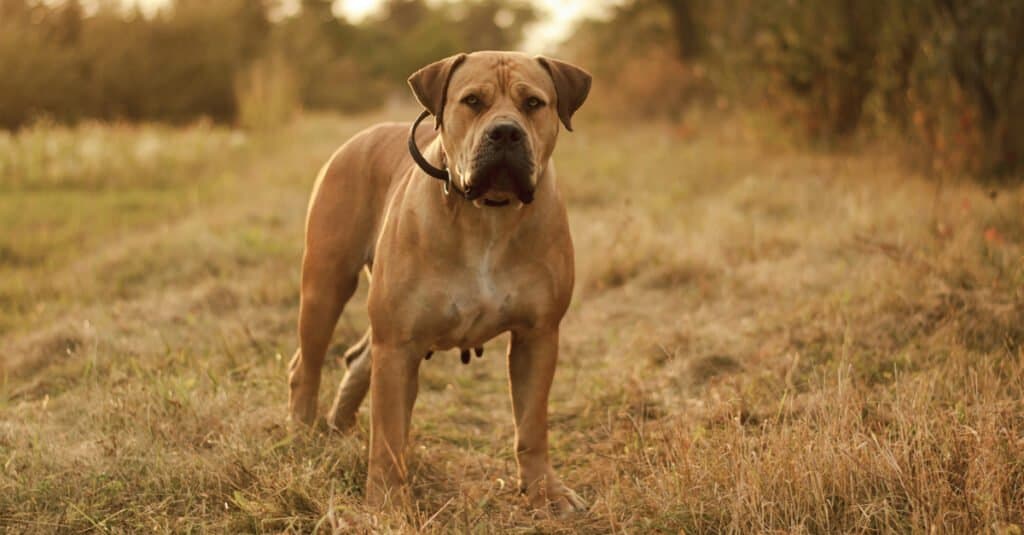
©Asonia/Shutterstock.com
Dutch dogs brought with the white settlers who colonized South Africa served as the direct ancestors of the Boerboel — a working dog that resembles the mastiff and is used for herding both cattle and sheep. Unfortunately, this breed’s history is intertwined with South Africa‘s dark history, as the intimidating size of these dogs was leveraged to protect the diamond mines of the DeBeers company. And their usage in helping maintain apartheid made them questionable symbols of the country’s deep systems of inequality.
Despite this, the Boerboel is a naturally loving and protective dog, and they’ve been regarded throughout their history as excellent nanny dogs. Today, the Boerboel has distribution far outside of South Africa, and that allows them to thrive on their own merits — as large and powerful dogs with sweet, goofy, and giving personalities.
#4: Pembroke and Welsh Corgi
Place of Origin: Wales
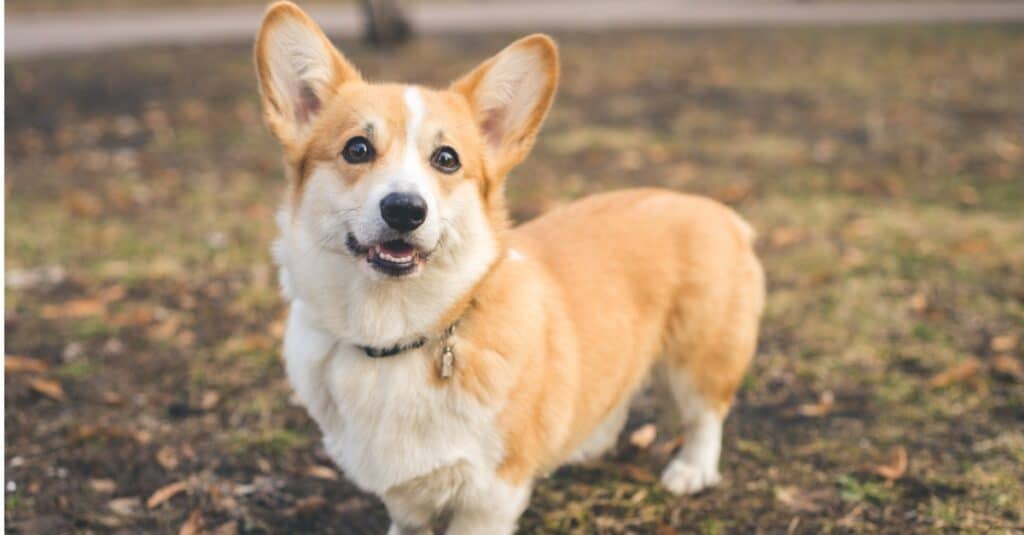
©iStock.com/gorodisskij
While it might seem like size would be a necessity for effectively leading cattle, the squat and stocky corgi demonstrates that being petite can actually be an advantage for working dogs. The average Pembroke Welsh Corgi stands just shy of a foot tall, and local folklore insists that these working dogs also pulled carriages for the various fairy courts in Wales.
Outside of the fairy courts, the smaller stature of these dogs allows them to more effectively weave between the cattle in their herd and nip at their ankles without having to bend down or turn their attention away from potential threats. That’s also forced them to adopt a different strategy from larger herding dogs. They’ll typically drive an entire herd from the back rather than circle them.
The Welsh Corgi actually consists of two breeds — the Pembroke and the Cardigan. And while they may look quite similar at a glance, their differences are about as distinct as those between an African and Asian lion. But both breeds share in common a confidence and boldness far greater than their size would suggest.
#3: Finnish Lapphund
Place of Origin: Lappland, Finland
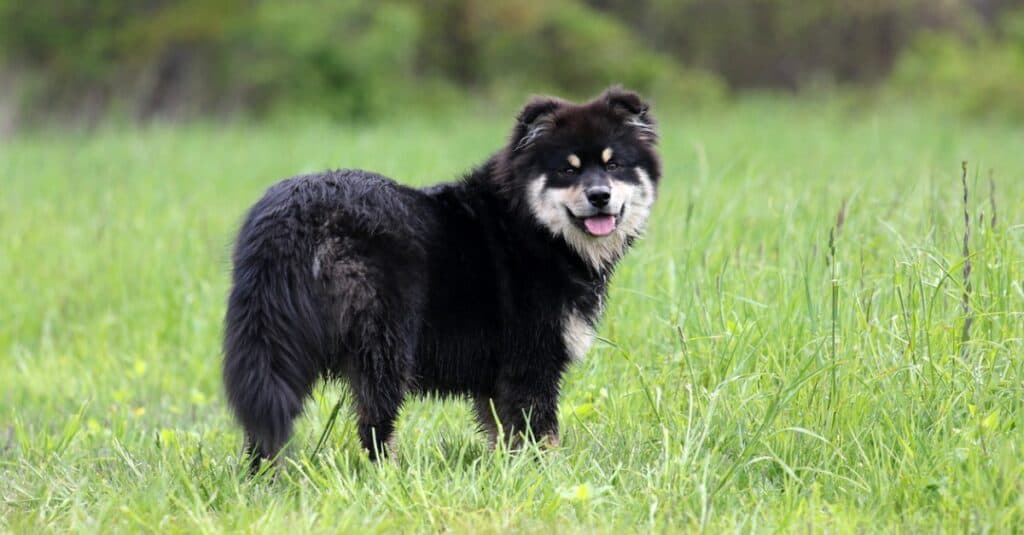
©iStock.com/suefeldberg
One of Finland’s most beloved breeds is also used to herd reindeer. Their shaggier coats make them an appropriate choice for the Arctic climates where reindeer are herded, but they can also be used to herd cattle in the country. Outside of their native country, the Finnish Lapphund is rare — and there are as few as 11 members of the breed in the United States.
Finnish Lapphunds are among the 5 most popular dog breeds in Finland. The Finns take pride in this known dog breed and consider them one of their national breeds. Most recently, this breed has become rather rare to find performing in reindeer herding due to modern Sami people living a completely different way of life.
But the Lapphund has taken on more adaptations than just a thick fur coat. They also startle very easily — a trait that can take some getting used to as a pet parent but one that’s designed to protect them from the lightning-quick and devastatingly powerful hooves of their livestock. The Finnish Lapphund is known to bark, and that also makes them very effective guard dogs.
#2: Australian Shepherd
Place of Origin: Southwest United States

©Alpeek/Shutterstock.com
There’s a lot that we don’t know about the Australian shepherd, but one of the more definitive truths we do know is that it doesn’t actually come from Down Under. Instead, it developed in the American Southwest and is well adapted to the rugged landscapes of Wyoming, rural California, and Colorado. Instead, these dogs earned their name because they were common companions to Australian Basque migrants who incorporated this breed into their herding activities. No one is quite sure where they first originated, but the Basque connection is often used to justify the plausible theory that they were descended from Spanish and French herding dogs.
Despite not seeming to share much in the way of DNA, the Australian shepherd does possess the Australian cattle dog’s style of herding and their boisterous and active personality. But their big brains and willingness to learn make them great choices for the active family.
#1: Australian Cattle Dog
Place of Origin: Australia
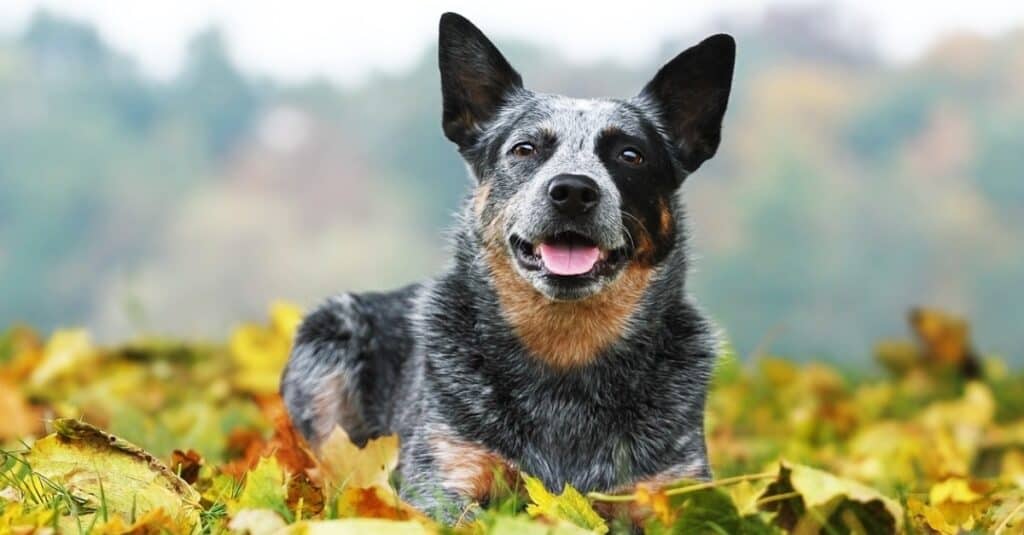
©iStock.com/Carmelka
If you want to breed a dog to keep your cattle safe, you probably wouldn’t assume that Australia’s wild and unpredictable dingo wouldn’t be the best choice of breeding stock. But it’s a formula that’s worked for Australian ranchers for generations. The lineage of the Australian cattle dog first began in the 1800s Northumberland as a result of breeding between domesticated dingos and collies.
Now known as blue heeler dogs, this breed was designed to drive cattle over the long spans of Outback wilderness. That necessitates a sharp and agile mind matched to an equally agile and athletic body, and blue heeler dogs have these qualities in spades. That makes them easy to train but can also make them strong-headed and highly curious. The Australian cattle dog has a tendency to attach strongly to one person in a family, and blue heeler dogs have developed an aggressive and no-nonsense approach to handling cattle that can result in them nipping at children or other pets in an attempt to herd them.
List of Cattle Dog Breeds
For your easy perusal, here’s our list of the most interesting different types of cattle dogs:
| Rank | Cattle Dog Breeds |
|---|---|
| 8. | Australian Cattle Dog |
| 7. | Australian Shepherd |
| 6. | Finnish Lapphund |
| 5. | Corgi |
| 4. | Boerboel |
| 3. | Bergamasco Sheepdog |
| 2. | Shetland Sheepdog |
| 1. | Bearded Collie |
Next Up…
- Types of Toy Dog Breeds – Interested in getting a toy pup? Find out the right breed for you!
- Types of Pointer Dog Breeds – Need a great hunting dog? Check out some of these pointer dog breeds to help boost your hunting experience!
- Types of Hound Dog Breeds – Check out these different hound dog breeds, this list may surprise you!
The photo featured at the top of this post is © iStock.com/Carmelka
Ready to discover the top 10 cutest dog breeds in the entire world?
How about the fastest dogs, the largest dogs and those that are -- quite frankly -- just the kindest dogs on the planet? Each day, AZ Animals sends out lists just like this to our thousands of email subscribers. And the best part? It's FREE. Join today by entering your email below.
Thank you for reading! Have some feedback for us? Contact the AZ Animals editorial team.






